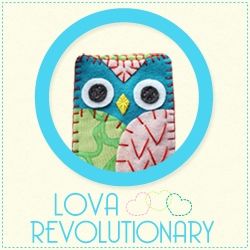Some artists have begun to figure out ways to make money and make art — aiming to end the notion that “starving” and “artist” are necessarily linked.
Rather than seeing art as something to pursue in the hours when they are not earning a living, these artists are developing businesses around their talents. These artists are part of a growing movement that has caught the attention of business experts and is being nudged along by both art and business schools.
Living in the Internet era has certainly helped.
Claudine Hellmuth, for example, said that when she graduated from the Corcoran College of Art in Washington in 1997, career options for artists were limited. “You could teach, or do outdoor festivals, maybe get into a gallery,” she said.
At the encouragement of her mother, she took an intensive summer course in Web programming and design at George Washington University and then returned home to Florida, where she found work as an online designer. All along, she continued to paint on the side, thinking that her day jobs would support her. A layoff in 2001 proved to be a turning point.
“I now had the skills to use the Internet to my advantage,” she said. “I am so thankful that I left the art world for a little while.” With a little Web savvy, she says, it is relatively easy for artists to reach a global marketplace for their work.
In a blog post on the American Express Open Forum, Steve King, a small business expert with Emergent Research, cited Ms. Hellmuth as an example of trends that are creating new opportunities for artist entrepreneurs.
Mr. King said he discovered Ms. Hellmuth after her name kept coming up in interviews with artists for research his firm was conducting on artist entrepreneurs. Ms. Hellmuth’s success stems in part from the way she has created multiple revenue streams. She has an online store on Etsy.com, a Web portal where artists sell their work. She does custom illustrations for customers using photographs they provide. She licenses her artwork for greeting cards, calendars and other products. She has written two books about her techniques and has a third one coming out. She tours the country teaching both business and art workshops. And last summer she partnered with Ranger Industries to manufacture a line of products including paintbrushes, paints and canvases.
“When I am making the custom artwork for people, there are only so many pieces I can make in a week, so it really limits the amount of income I can make,” she said. By expanding into books and licensing deals for products, “then you have the potential to make a living.”
Through her business, Ms. Hellmuth said, she contributes an equal share of the household income as her husband, who works on the technology side of newspaper publishing.
Art schools, too, are starting to step in. At the Ringling College of Art and Design in Sarasota, Fla., students can now major or minor in a program called “The Business of Art and Design.” Larry Thompson, the school’s dean, said he was inspired to create the program when he read about Dan Pink’s book, “A Whole New Mind,” which popularized the notion that artists, especially those who can marry left and right brain skills, the analytical and the creative, will be in high demand in the coming years.
“I am committed to destroying the myth of the starving artist,” Mr. Thompson said.
Alexander Niles, 14, a high school freshman in Miami with dreams of making it big as a musician, is young to be focused on making a living. But he has already become an entrepreneur.
It all began by accident, he said. He was late in handing in his choices for elective classes and landed in a course on business. For an assignment to write a business plan, he turned to his passion, guitars, and decided to create a business building custom guitars for other people, something he had already done for himself.
After refining his idea in class, Mr. Niles entered his business plan into a local competition sponsored by the National Foundation for Teaching Entrepreneurship and captured the grand prize for South Florida, which allowed him to compete in a national competition in New York this fall.
The price for his guitars starts at about $2,000, and he expects to make a profit of around $700 a guitar. So far, he has made four, including one for a former instructor, Alex Fox, a flamenco guitarist who has endorsed Mr. Niles’s company. Mr. Niles has set up a Web site, but he does not plan to start filling orders until he has lined up other endorsements, finished his YouTube video and started establishing his brand through an advertising campaign.
Though Mr. Niles has years of school ahead of him, he said he planned to tend to both his music and his business along the way.
“If I make it as a musician, then my guitars will go for way higher than I planned,” he said, citing the example of Brian May of the band Queen who built his own guitar out of firewood with his father.
Mr. Niles and Ms. Hellmuth have learned on their own what Elliot McGucken teaches in his course, Artist Entrepreneurs, which he developed at the University of North Carolina at Chapel Hill with a grant from the Kauffman Foundation. Mr. McGucken’s course, now taught at Pepperdine University, rests on the principle that those who create art should have the skills to own it, profit from it and protect it.
“It’s about how to make your passion your profession, your avocation your vocation, and to make this long-term sustainable,” he said.
Tristan Hummel, 22, a senior at the Art Institute of Chicago, said he wanted to help create a world where artists could do art as their primary practice and still make a living. Three years ago, after reading that Chicago’s El trains were available for rent, he got the idea to bring artists together to create an art show on wheels. This fall, his idea came to fruition with “Art on Track,” an eight-train car on the orange line that traveled Chicago’s loop while displaying the work of more than 200 emerging artists.
Mr. Hummel now has several other proposals in process, including one to turn a 16-story garage into a sod-covered hanging garden art fair. “Hundreds of artists I know are working hard to cope with the fact that art is traded and sold in a medieval way where artists don’t get to determine the price and what kind of work they create.”
So are these artists selling out by turning to business for the answers?
Absolutely not, Mr. Niles said. “Yes, playing music is mostly about the art. But it’s important to think about what you’re going to do with it. You can play it in a bar, or you can be striving to take it to the top.”
































No comments:
Post a Comment